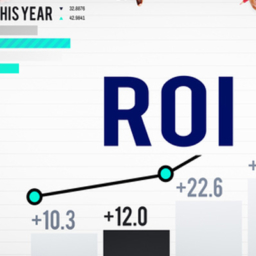The secret of successful business is data-driven decision-making
Organizations need to realize that data has value. There is a voluminous amount of data involved in running a business. What this means is that its power has to be integrated now and then when making business decisions. With only a basic understanding of the importance of the data, it is possible to win more than you lose, and attract more success to your business. In fact, if you have the ambitions of gaining a competitive edge over your competitors, you will need to keep all your business decisions data driven. Research conducted by the Sloan School of Business indicates that companies that engaged in data-driven decision-making experience a 6% increase in the productivity and the output of the company over the companies that do not.
With the recent growth in the volume of data, a different method of analyzing data has been developed as organizations struggle to integrate this data more into their decision-making process. However, in organizations that understand the data-driven culture, decision-making is approached from the quantitative point of view instead of reliance on the gut feeling.
This article highlights the importance of incorporating data by explaining the details of what it entails and the best way it can enable your company to be more productive:
1. Source the data
In many respects, a business can utilize both internal and external data. The idea is to begin with simple data that is available to the company. Such data includes customer records, sales data and stock and inventory. What will give your company a competitive advantage though is utilizing external data. This means that every time a decision needs to be made your company acts, it has to make decisions based on information gathered from the wide world outside. With this information, you can know what to be dealt with next, the cards that your competitors are using and you will be able to make judgments on the impacts of a decision.
2. Weigh the costs and benefits
Weighing the costs versus the benefits is very important in your desire to keep your company data driven. Identifying the costs is easy for most businesses, but you have to ideally weigh the expected benefits too. It’s useful to consider an increase in productivity and gain on the competitive advantage can yield significant payoffs. When weighing the costs, your company has to integrate the costs of not integrating data in the decision-making process. Otherwise, it will be left behind.
3. Secure ownership of the data
The reason why securing ownership is so important is that the decisions you make have to rely on some data. For example, if your business is on a flush draw, you can use both external and internal data to work out the chances of coming out of the situation strong. Data can also be used in working out the investments that should be made in certain circumstances or whether the business has enough money to invest in an excellent course.
4. Manage the data
There is a massive availability of information available for your company to consider. This information is best captured by a powerful marketing dashboard. It’s up to you to find the data that is most useful. For this reason, it’s important for you to consider security choices and avoid data storage. Your company must focus extensively on the opportunities and challenges that are presented by the big data. Consistent reporting of data among business units, the tools that will be responsible for collecting the data and on how to integrate the data into your system
5. Establish infrastructure and technology
Infrastructure is a key to data-driven business as it allows you take advantage of data. The first step is to identify the equipment that you have in place and the infrastructure you will need to make data-driven operations possible. The three key areas to consider when establishing your infrastructure are; creating tools and processes to access internal and external data. Ensuring that the processes involved in storing the data are safe and secure and in setting up data algorithms to analyze the data automatically.
Read More at CIO

















